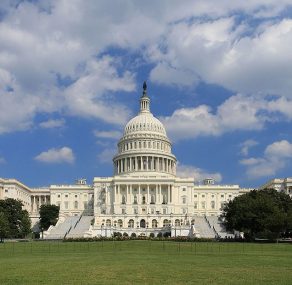Articles
All the latest articles covering the information that you will be craving to devour will be available via this category. From getting to know how indebted our company is to reading about the presidential elections; from knowing about new retirement plans to finding out how security breaches can affect your life; you can browse it all!
For more articles, visit our articles’ section.
Public Sector Retirement, LLC (‘PSR,’ ‘PSRetirement.com’ or the ‘Site’) is a news channel focusing on federal and postal retirement information. Although PSR publishes information believed to be accurate and from authors that have proclaimed themselves as experts in their given field of endeavor but PSR cannot guarantee the accuracy of any such information not can PSR independently verify such professional claims for accuracy. Expressly, PSR disclaims any liability for any inaccuracies written by authors on the Site, makes no claims to the validity of such information. By reading any information provided by June Kirby or other Authors you acknowledge that you have read and agree to be bound by the Terms of Use
Retirement Eligible Workers Within Certain Federal Agencies
/by AdminToday, about 1.5 out of ten federal workers qualify to be retirees as per the government’s human resource office data. This number is however expected to double in the next five years. The federal officials have been warning the baby boomer generation about the retirement waves and how to plan early enough and understand about pension eligibility rather than waiting to get there so they can start rushing to look for a remedy.
The total number of retired federal workers has shown a slight increment over the last ten years, but it has dropped for three consecutive years. The number of voluntary retirees has also fallen in recent years but has increased by approximately 18 percent over the last decade.
According to information given by the Office of Personnel Management to the Government Executive, about 14% of federal workers are currently eligible to retire. This number is expected to rise to 30% in the next five years. The government has been trying and striving to employ the youths to balance this number, but until now, some agencies are yet to get in the right shape.
An example is the Housing and Urban Development Department which has the highest number of workers who qualify to be retirees of any significant government agency with 24%. This number is likely to spike to 45% in the next five years, and if they do not do something to deal with this, things could go wrong. The agencies are however working hard to solve this.
NASA has 21% of workers eligible to retire, and this could jump to 44% in five years, but the officials say they are not worried about the coming wave. They claim that the agency’s work is exciting and fun, which makes employees to stick around even after reaching their eligible age for retiring. This agency is currently ranked as the best place to work.
Employees are considered to be retirement eligible once they qualify to receive the full benefits under the Civil Service Retirement System or the Federal Employees Retirement System. The Small Business Administration has the lowest rate with only one out of 10 workers currently eligible to retire. Homeland Security Department is also safe with only 10%.
This issue is pushing across agencies and lawmakers, and officials have shown efforts in trying to recruit young workers and some agencies incorporating potential workers evacuation in their risk assessments. Nothing is better than letting your workers understand the retirement eligibility trend.
Currently, over five IRS workers are eligible for retirement. Approximately 58,000 federal workers retired voluntarily in 2017, which is a rise from 39,000 voluntary retirees ten years ago. The number had significantly risen in fiscal 2014 when 61,000 workers voluntarily retired.

Federal Employees: Are They Overpaid or Underpaid?
/by AdminWhenever it comes to salaries, things always tend to get complicated, and as such, the federal salary council was set to take action on their meeting which was mainly focusing on pay comparison results as well as formulating its recommendations on the same. All this is because of some comments that were made on major methodological concerns by a report from a president’s pay agent.
According to the council, the pay gap stood at 32% in the spring. Somehow despite an expected rise of 2.1% and 1.8% in 2017 and 2018 respectively, the gap closed from 34% in 2016. It’s really shocking that the difference is that huge up to now.
Having announced increases with step, promotion, and quality step increase, the totals have since then been very competitive. However, the best solution would be for the council to explain the 32% gap interpretation which makes very little sense. Employees are spread across 15 pay grades, and it is absurd for salaries to be that lower than the federal levels. Closing the game involves increasing US workers salary, and that would be almost unachievable.
The annual analysis has ever since then become a serious problem to deal with, and there is way too much inconsistency from workers and the organizations used as well. You can call it a classic black box calculation. However, the in current gap analysis, there is no comparison of the federal worker’s salaries and that of non-federal ones. Despite conducting numerous surveys here and there, none indeed pointed out precisely how well federal jobs are paid. Getting complete information on this would require a separate analysis.
Some divisions show that federal workers are overpaid like think tanks and congregational budget office. Other various studies agree to the same as well. Economist Gary Becker was the first to use the underlying methodology. And being a Nobel Prize winner, you can understand why. The famous phrase human capital is his best-known work yet. According to his analyses, education and experience always lead to better pay.
Now according to the critics, all this information about education level, work occupation, geographic location, gender, experience, dummy variable and ethnicity all explain the amount that a worker gets paid. Also, the analysis overlooks the aspect of most federal jobs. In reality, the problems faced by the federal workers are more complicated and harder than what the state and local government face. The problems also bring along great consequences and higher budgets. According to a population survey, the worker’s salaries should at least reflect their job’s level of accountability and impact on the society.
According to the business approach salary planning, determining the worker’s salary goes down to two main concerns. This is; exclusion of their value benefit from the pay comparisons since, salaries end up getting most attention and comparisons between the federal and non-federal salaries as they fail to completely reflect the real struggles they face, labor shortages and surplus.

How Do You Increase Your Retirement Income?
/by AdminWhat’s worse than running out of money in retirement age? These are times when all you should be doing is relax and enjoy the fruits of your many years’ hard work. This has become a significant concern such that over 60% of American retirees are more concerned about saving during their working years than they are worried about dying. Instead of going through this stress, it is best if you take a step and do something about it by starting saving and increasing your income as early as now. How do you do that?
Implement catch-up contributions in your IRA OR 401(k)
The best part about being over 50 years is that you start gaining more flexibility with the amount of IRS funds you can contribute to your retirement plan. Today, employees who are over 50 get more than $1000 IRA catch-up and $6000 with 401(k) catch-up. This results in a significant increase in the total savings.
With this, you can only imagine how much you can save in 15 years in a scenario where you are 52 and wish to retire at 67. If you increase your contributions by $1,000 each year, that will add up to $15,000 by that time. How awesome is this?
Delay your social security benefits
Do not be in a rush to file for social security since the age at which you file for them can significantly determine if they will go up or low. Delaying the filing until you are past the retirement age automatically increases them by 8% per year until you are 70. Take an example where you are to receive monthly benefits of $1600 at 67, but then you wait until you are 70 to file for the social security benefits. This will increase the benefits to $1,984 which makes it a total of $4,600 increment per year.
Focus on dividend-paying stocks
You should note that not all kinds of stock offer dividends. With some, you will get nothing after holding them. You can avoid this by filling your portfolio with dividend stocks which allows you to get quarterly payments which you can use to increase your retirement income. The best part about these stocks is that even when the stock market misbehaves, you still get to receive your payments.
Bonds
This is another thing that you need if you wish to receive a consistent payment. It does not matter if the market is underperforming, you will still receive your payment which will help you significantly during your retirement age. Bonds are the better option compared to stocks due to their low level of risks. Take advantage of this and buy as many bonds as you can, especially the municipal bonds.
Work on your housing condition
Housing happens to be the highest monthly expense, and if you are not careful enough, this expense could drain you in your later life. You do not want to spend as much on housing after retirement as you used to during your pre-retirement years. Cut on the possible costs, for example; you can get a smaller house. A small house will generally come with minimum expenses. Heating cooling and maintaining it all becomes easier and less demanding. You may also decide to relocate to a cheaper part of the country and rather than renting, get your own house instead.
With these tips, you can have a happy retirement knowing that you have enough to push you through the years.

How do Military and Federal Workers Invest?
/by AdminOne of the most celebrated groups of individuals in America is those who serve the U.S in the armed forces. One of the ways in which they are celebrated is by ensuring that they are well taken care of financially. This is not only during their line of duty but also after they have retired.
Retirement income savings have become a significant concern with lots of upcoming plans meant to help federal workers in doing so. One of the critical plans is the Thrift Savings Plans. The retirement plan works similarly with the 401(k) which is for private-sector employees. The aim is to allow participants to set aside a particular portion of their income, invest and thus save for their retirement years.
The plan comes with loads of benefits, the biggest one being that it provides participants with numerous investment options which are among the cheapest and most flexible in the investment sector. The annual investment fees are ideally between $2 and $4 for every $10,000 of investment.
Each year this plan gives participants and the public an opportunity to see how much they have invested in each of the investment offers. A recent report suggested that most of the workers have a balanced investment.
TSP comprises of five different funds, and among them, there are two which are the G and F fund which are mainly focused on fixed income securities such as bonds. The G fund is the largest and pays an interest equivalent to the average weight of a long-term Treasury debt. The F Fund, on the other hand, is diversified to take a broader approach that entails corporate bonds. Most TSP investors have invested their assets in bonds.
The other three out of five funds are mostly focused on other areas of the stock market. C fund tracks the S$P 500, the I Funds invests in international stocks while S Fund is focused on the small-cap U.S. The federal workers and the service members prefer the blue-chip U.S stocks more as they are more familiar with it but they also deal with other kinds stocks.
Regardless, allocating 55% and 45% to stocks and bonds respectively is a great investment idea. It helps the military members ensure that they are in an excellent financial security position even after retirement.
Most Americans are way behind with their savings, but they can still get back on track by taking advantage of social security secrets. It is an excellent way of boosting their retirement income. For example, one could opt to pay more each year, and as long as you understand how to maximize your social security, there is no doubt that you are good to go through your retirement season.

Thrift Savings Plan Investment Limit Increasing to $19,000 in 2019
/by AdminSome changes are set to take effect as from 2019, and one of them is an increase in the Thrift Savings Plan from $18500 to $19000 for all federal employees. Also, on Thursday, the internal revenue service put forward that there would be a rise in some retirement savings plans such as the 401(k)s.
There is a different category, however, and that includes “catch up contributions” which is strictly for people aged 50 years and above. For them, theirs will remain at $6000, and there won’t be any adjustments whatsoever.
Nowadays every federal employee has opted to open a TSP account. In most cases, these workers have no choice because once you are enrolled in the Federal Employees Retirement System, an account is established immediately whether you want to or not. It is almost like a requirement for people hired as from 1983.
Approximately 2.6 million, U.S postal service workers inclusive, are under the retirement program. Among them, 7% which equals about 180,000 have reached the investment maximum of $18000 in 2017 thanks to some data collected from TSP records. The exciting part is that of the 180,000, 122,000 were either 50 years old or more. Still, among those, 79,000 had their plan that included investing in the additional maximum of $6,000.
As of August FERS-covered employee average account stood at $145,000 an amount that is expected to keep on rising gradually over time. One of the standout factors here is the fact that the government plays a significant role and sees through a contribution of 1% of the participant’s salary annually whether or not one opts to invest. For employees under FERS and happen to invest personally, qualify to sum up a total of an extra 4% of salary. However, it’s worth noting that these government contributions do not affect the investment maximums that have already been set.
Most FERS employees are into personal investment plans with exceptions being about 10% of them. Their average investment rate is approximately 8%, an amount that’s big enough comprise of the maximum government match.
Previously there was a Civil Service Retirement System, and some federal workers are still under it although they are about 5% now. For them, they get to invest up to the same maximums as the others although they don’t get employer contributions. According to TSP records, their average account balances stood at $150,000 in August an amount slightly lower than for the federal workers using the latest retirement program.
TSP does not have so many limits and now embraces military personnel as well. The same limits as with the other category apply as well. For federal and military personnel, there is a provision that allows them to keep accounts open even after retirement. However, they cannot make new investments. On overall, there are many people with TSP accounts that number presumably at 5.3 million now.

Changes to 401(k) and IRS Limits in 2019
/by AdminGood news for the retirement income savers! They can now contribute an extra of $500 in the 401(k)s and IRA according to the adjustments made for the cost of living for 2019. This means that unlike before, they can now contribute up to $6000 which is an increase from 2018’s $5500.
Employees with a higher income will be able to contribute to Roth IRAs and are also eligible to claim the retirement saver’s tax credit. Here is a comprehensive outline of the changes.
The 401(k) contribution limit in 2019
The contribution limits for most 457 plans, 403(b)s, federal government’s Thrift Savings Plan and the 401(k)s will rise to $19,000, an increase from $18,500 in 2018. If you are already contributing to your retirement account, the best thing to do is keep delaying your paycheck so that you can easily contribute to the retirement account following these new and higher limits. The increments will allow you to get more tax benefits on your savings. The workers will be able to delay their income tax on about $42 more per month which is an excellent way to increase their retirement income.
The IRA income cutoffs
The employees without access to a 401(k) plan or that sort of retirement account can still contribute to a tax deductive IRA account. This is regardless of what they earn. However, workers who have access to a 401(k) plan will be allowed to claim a tax deduction on their IRA contribution if they earn a higher income. The ability to claim the deduction from IRA will be based on the contribution limit and whether they file as a couple or single which will determine if they can deduct some or all of their IRA contribution. Those earning over $74,000 as an individual or $123,000 as a couple are not allowed to file for the tax deduction.
ROTH IRA income limits
This account’s contributions allow you to be eligible for tax-free investment growth and withdrawals in retirement. Workers will be able to earn an extra $2,000 in 2019 and $4,000 for married couples and still qualify for contributing to the Roth IRA. However, those who earn more than $122,000 and $193,000 as individuals and as a couple respectively are prohibited from making the Roth IRA contributions. Individuals and couples earning more than $137,000 and $203,000 respectively will not be able to make direct contributions to a ROTH IRA. ROTH account is most preferred because any withdrawals made in retirement are tax-free.
Saver’s credit income limit
The low retirement income savers will be able to earn between $500 and $1000 more and be eligible for the saver’s credit. This tax credit is equivalent to approximately 10 to 50% of IRA and 401(k) for individuals and couples contributing up to $2,000 and $4,000 respectively. Consequently, the income limit for their credit will increase to $32,000, $48,000 and $64,000 for individuals, heads of households and couples respectively. The low earning retirement savers qualify for the biggest credit which is worth up to $1,000 for single savers and $2,000 for couples.

Changes Proposed for the TSP
/by AdminThe Federal Retirement Thrift Investment Board (FRTIB) is tasked with running TSP and making any required changes from time to time, and it’s worth noting that it has done a spectacular job. There is the withdraw limit changes that FRTIB has to see through by November 2019. That is just an example of the changes the board is expected to implement with time.
It is worth noting that the FRTIB is not the only board interested in seeing some changes passed. There are other parties in this as well like for example Sen. Jeff Merkley, D-OR, The Retirement Investments for a Sustainable Economy Act (S. 3424) recently proposed the establishment of a TSP fund stock option to avoid investment in fossil fuel companies. It is providing a green investment option for conserving the environment.
Usually, TSP collects data over time and according to their fund sheets on the website, the last data which was on December 31st, 2017, there were three stock funds which had fossil fuel companies in their midst. Actually, in the C-Fund category, Exxon-Mobil sits at the top ten of the available stocks. In the I-Fund category, Royal Dutch Shell and British Petroleum also make it in the top ten.
There are many changes that the thrift board is planning to see through and a “mutual fund window” is really on the cards for implementation in the nearby future. It allows all interested TSP participants to a specific amount of their TSP in external mutual funds without much hassle. This window will give participants a lot of freedom and provide investors with wide discretion on what type of funds one chooses to invest in. In a way, green mutual funds could be inclusive in this new arrangement.
There is no shortage of plans, and there is another proposal that involves the reduction of the rate of return of the TSP G Fund. It is something that has been included in budget plans of House Republican this year, and it’s aimed at making the thrift board well-off. There was also a case of benefit cuts that are most likely to be kept aside because of the midterm elections that completely changed the dynamics of the House with new personnel on board. However, the implementation of all these plans will have to take place sooner or later especially if the council commits to them.
One of the things worth noting is that G Fund pays interest that’s roughly the same as mid-term government bonds. It, however, bears no risks at all if by any chance interests go up. In most cases people that support lowering the rate always see it as a way of financing since when the rates are reduced, a lot of capital is freed for other purposes.
According to a House bill passed last year, everyone that took part in G Fund would be offered a long-term rate on what was deemed as short-term security. That was right and the best deal the feds could come up with.

Benefits and Drawbacks of the (Antiquated) TSP Annuity by Michael Wood
/by Michael WoodMichael Wood has been a licensed professional for almost 20 years, and he has focused exclusively on those consumers who are close to or already retired.
An annuity is a form of investment where a group of people each contribute a specific amount of cash and at the end each is guaranteed a stream of income. The primary purpose of such a program is to minimize the risk of exhausting your life savings. No one can really predict how long they will be alive, so the essence of annuity is to collect money as a group, so that the participants don’t reach a point where he/she has to use up all of their personal life savings.
Annuities are available in different forms, and each has its shortcomings as well as advantages, but the most important thing to note is that you continue to get payments for life even after your account balances reach zero. Whichever line of work your in, once your paycheck stops, any plans to invest are significantly affected. However, it’s crucial to note that after retirement:
The only thing that counts is your income
Many people wonder where to get income from after retirement, but it’s easy as long as you invest in the TSP and retire in a bull market. The most laborious task comes when you retire in a bear market, and the interest rate environment is entirely suppressed. It becomes very tough trying to generate a safe, sustainable income because most of the time you’ll be spending more than what your account can handle. This is why nowadays many people fear to exhaust their savings.
TSP annuity
To counter the fear of outliving personal savings, the TSP provides a solution to all its participants by providing them with an option to buy a Single Premium Immediate Annuity (SPIA) with their TSP balances. This allows for the generation of income for life and secures the participant’s future as well as acts as a supplement to a personal pension. It is worth noting that the SPIA model has not changed for ages now and guaranteed participants that they won’t outlive their payments no matter the market conditions. However, you will have to forfeit all your contributions to the SPIA.
The rigidly inflexible approach present here is what is often referred to as an annuity, and many people don’t like the idea of having to give up hard-earned cash to acquire it. In as much SPIA requires you to surrender control, you get a chance to select what works for you from various options.
TSP annuity payout options
Single life only- this provides the most prominent monthly payment option. However, you only get paid when you’re alive, and as soon as you are gone, everything you leave is kept. So it’s not always a good choice for people with families.
All other options provide participants with an opportunity to continue offering payments to loved ones even after you pass but that means your monthly benefits are reduced when alive.
More Innovative Annuity Options
In as much as annuities are often referred to as restrictive and inflexible, not all of them are. One of the significant innovations is that insurance companies no longer require you to give up your contributions to get a lifetime income benefit. It is an excellent deal since you don’t need to worry about outliving your annuity income and you still get to access your remaining balance.
Contact Michael Wood
[email protected]

A General Overview of Thrift Saving Plan (TSP)
/by AdminThe Thrift Saving Plan (TSP) is a kind of a retirement saving plan which is more like the popular 401(k) plan but with better terms. It was created by the Federal Employees Retirement System Act of 1986, with the aim of helping federal workers and the members of the military services.
This plan works as a contribution plan meant to offer the federal workers similar retirement benefits as those received by the private sector’s workers. Some of the benefits of TSP include agency matching contributions, catch-up contributions and as well as automatic contributions. With TSP, federal workers can make tax-deferred contributions. This means that the money that gets in their account will be tax-free until it is withdrawn. This way, it is right to say that the account has similar benefits as the 401(k) plans.
Savers are also eligible for saving in a Roth TSP. This allows them to make tax-free contributions to their saving plans while still getting the benefit of making tax-free withdrawals. The TSP and Roth TSP accounts provide up to six different kinds of funds where federal workers can invest their savings. These include the Fixed Income Index Investment Fund, the Small Capitalization Stock Index Investment Fund, the Government Securities Investment Fund, the Common Stock Index Investment Fund, the International Stock Index Investment Fund, and the specific lifecycle funds.
Unlike other saving plans, the TSP contributions entail no management fee, and it is the most preferred for individuals who are trying to save more by evading tax. The plan has shown incredible performance over the years. Probably the best benefit of TSP is that the government can match a military service member’s contribution for up to 5%. Also, the plan can be customized to meet the member’s needs.
All TSP participants are eligible to a loan program, tax deferral on their savings, in-service withdrawals for their later life precisely after the age of 59.5 years and five types of investment funds.
If you have questions about your own TSP plan, please reach out to a trusted financial advisor.

Agency Says TSP Participants to Receive 2-Factor Authentication
/by AdminOver 5.2 million participants in the Thrift Savings Plan will benefit from tight security measures that will be available on their online TSP accounts.
According to the agency that administers the TSP, the Federal Retirement Thrift Investment Board says that the implementation of two-factor authentication is underway for its participants accessing their online accounts.
According to an email by TSP spokesman David Toro to Federal News Network, the agency aims to have the system in place at the end of fiscal year.
Toro added that for the FRTIB, the project is its first priority since participants have been demanding to have a two-factor authentication to ensure their online TSP accounts have tight security measures.
At the moment, participants can only access their online accounts by entering their user ID and password. The FRTIB has recently added more features that enable participants to reset their online accounts passwords. The only way it could have been done previously was by over the participant’s phones.
Cybersecurity is a tough barrier to the majority of agencies across for the FRTIB. The systems are mostly under the threat of hackers accessing their personal information, and of the 123,000 participants, it was done through exploiting a 2012 board’s contractors.
To TSP participants, the addition of two-factor authentication is essential since the majority of them have been affected by two massive data breaches in 2015 at the Office of Personnel Management.
The FRTIB continued the effort to enhance its plan for addressing security and the increasing number of audit recommendations in the agency, which is a part of the two-factor authentication project.
Based on the TSP’s count, at the end of fiscal 2018, the agency will have 341 open audit recommendations. Among the two open recommendations in the agency, they date back to 2007, and as from 2016, 150 of them have not been met.
Since FRTIB is a small agency, it does not have an inspector general responsible for offering up recommendations. The Labor Department and independent consultation firms evaluate several areas such as the agency financial status, Federal Information Security Management Act (FISMA) compliance and performance of funds.
According to Ravi Deo, the Executive Director at FRTIB, he highlights that the agency is aiming to close about 30 audit recommendations at every quarter and they have a goal to close over 120 by the end of the coming fiscal year.
To achieve the goals, Deo highlights that they have a plan that is aggressive to closing audit recommendations at a faster rate compared to the previous period.
The FRTIB Office of Enterprise Risk Management and that of Technology Services have reviewed each of the 341 open recommendations. The score assigned is either critical, high, moderate or low. According to Deo, at the beginning of the month during the FTRTIB board meeting, he said that other new recommendations are in plan or progress.
A risk ranking will be assigned to each one by the agency once FRTIB has received and reviewed the audit with its findings. Deo highlights that findings with a rating of critical or high, the FRTIB will determine what will be done immediately to remediate them. The agency is hoping to develop multiple active plans for findings that have low-risk rankings.
Deo pointed out several signs on how security is improving at the FRTIB. There are no FRTIB vulnerabilities found by the Homeland Security Department at its National Cybersecurity Assessment and Technical Services that was tested in the past six months according to Deo.
New CISO compliance branch chief hired by FRTIB
In June, the agency hired a new chief information security officer while in September it hired an audit and compliance branch chief.
The plans to implementing two-factor authentication for TSP participants were cited by the FRTIB as part of auditing the finding remediation and plans to have security enhancement.
Also on the FRTIB bucket list is implementing an insider threat program that is formalized. The agency currently is lacking an insider threat program according to the March audit report that was made public earlier during the month by the Labor Department’s Employee Benefits Security Administration.
According to the audit, the agency is yet to implement controls for monitoring, preventing and detecting insider threats to the TSP.
A process to establish and evaluate the issue of insider threat continually has not been developed and implemented by the agency. Due to the controls required for identifying and monitoring infrastructure, these components have high-risk in physical and logical areas. The audit highlights that the agency has not assessed the requirement for insider threat training that is risk-specific. The weaknesses are present since the agency has not reached its formative stages to develop an insider threat program.
Deo highlights that in response to findings from the audit, the FRTIB plans to implement by August 2019 an insider threat program.

What You Need to Know About Discontinued Service Retirement
/by AdminThe sole type of federal retirement that does not fall into the ‘voluntary’ category is Discontinued Service Retirement or DSR. An employee can be eligible for DSR if, against their will, they are separated for reasons other than “misconduct or delinquency.” They must also meet the age and length of service requirements. Those requirements are either:
Age fifty with twenty years of service
or
Any age with twenty-five years of service.
In either of these cases, a minimum of five of the years of service are required to be creditable civilian service.
Ultimately, the Office of Personnel Management makes the determination as to whether the separation is involuntary. However, the following actions are usually considered to be involuntary:
-Reduction-in-force (RIF)
-Abolishment of position
-Lack of funds
-Expiration of incumbent’s term of office
-Unacceptable performance (unless due to employee’s misconduct).
-Transfer of function outside the commuting area
-Reassignment outside the commuting area when there is no mobility agreement.
-Failure to continue to meet the qualification requirements of the position. This is in the event of non-disciplinary separation, and if the action is initiated by the agency.
-Separation from failure to qualify during probation due to performance (not misconduct).
-Separation of a National Guard technician as a result of loss of the military membership or the rank that is required to hold the National Guard position.
-Removal from the Senior Executive Service for less than completely successful performance (under title 5, U.S.C., Ch. 43, Subchapter II).
It is important to note the differences between separation due to unacceptable job performance and separation due to misconduct. A worker who “can’t do” may be eligible for DSR, while a worker who “won’t do” will not be.
The employee’s separation can meet the criteria previously mentioned above, and the employee will not be eligible for DSR if they refuse a reasonable offer of a position.
An offer is reasonable if it is:
-In the same agency
-The same commuting area
-The same tenure group
-Within two grades of the previous position he employee was in.
Much like early retirement, DSR provides for a two percent per year reduction in a CSRS retiree’s pension for each year or month they are under age fifty-five (which is one-sixth of one percent per month). A FERS DSR retiree, who is not classified as a special category employee, will not have an age-based reduction to their pension, but until they have reached the age of sixty-two, they are not eligible to earn a cost-of-living increase.
HR practitioners dealing with an unacceptable performance or inability to perform cases should be aware of some special provisions related to those actions, cautions Barbara Haga, of Federal HR Services, Inc.
The agency must have decided to remove the employee for an employee to be eligible to retire under DSR, for either unacceptable performance or disability or illness.
If there was a performance action was taken under 5 CFR 432, this would mean that the employee was given an opportunity to correct their performance but the employee was unable or unwilling to improve. In this instance, the removal action would be what the employee’s retirement is based on. Therefore, an agency may not settle the case and remove the notice of decision so as to provide a clean record for the employee.

Build A Strong Foundation for Your Federal Disability Retirement Application
/by AdminFor every reliable endeavor, foundations are necessary. Is this a true statement or a repetition of sorts that to achieve reliability, there needs to be good foundation? Are foundations the basis of reliability?
Most people understand that foundations are a necessary part of life; that it’s a universal idea. If we didn’t, then we’d have to stand watch over every building construction we wanted to go into. Review the blueprints and talk to all the workers involved in the project before we went into the building.
If this is the case, why are people so quick to disregard it when turning in a Federal Disability Retirement application to the U.S. Office of Personnel Management regardless of the type of worker the person is? They could be a Federal or Postal worker under the CSRS, CSRS Offset or FERS, and still, disregard it.
Consider it: What foundation does a Federal Disability Retirement case have? Of course, there is a disability, and you can’t have a case without one. However, how can a medical disability be proven and be proven to have a connection with the job of a postal or federal employee?
The majority of these employees just prepare their Federal Disability Retirement application and expect their doctor, therapist, psychologist or chiropractor to follow the scant instructions on the form. Then, turn it in with the rest of their application without taking a glance at the content.
It’s imperative that Federal or Postal employees provide their doctor with clear instructions on how to lay out a worthwhile foundation for their Federal Disability Retirement Application, and that you talk with an attorney that doesn’t just say yes to everything you ask about the application.
Yes, you also need to look hard at who you hire to represent you with your Federal Disability Retirement application and case. You want a person who is willing to help you build a strong foundation to submit an effective Federal Disability Retirement application to the Office of Personnel Management.

Why Retiring Before the New Year Is Popular with Federal Workers
/by AdminWhy do many federal employees decide to retire before the new year? It’s because they can take advantage of their remaining annual leave they have left for a lump sum. This amount even surpasses the normal yearly carryover limit, but they have to do it before the next leave year begins.
When the agency starts to calculate the lump sum amount, they will estimate the number of unused hours of yearly leave forward should you have remained on the books. The amount given is based on what you would have gotten. In the amount are pay raises that you would have been given as well.
Your yearly carryover limit is dependent upon your federal status – postal employee or non-postal employee.
Postal Employees
If you’re a Postal Career Executive Service employee, you can get a lump sum payment for a limitless amount of accrued yearly leave. Those under the EAS (Executive and Administrative Scale) – managers, supervisors, postmasters, etc. – can get a maximum of 560 hours on top of the earned and accrued yearly leave in the year of retirement. A letter carrier or clerk with a union contract like NALC or APWU can attain a 440-hour lump sum payment.
Non-Postal Employees
If you’re a senior executive service member in the U.S. or its territories, the carryover is up to 720 hours. If not a senior executive service member, you can accrue and carry over no more than 240 hours of yearly leave for the next leave year. Any overseas employee can accrue and carryover at most 360 hours.
The leave year starts on the first day of the first pay period of the calendar year. For 2019 and non-postal employees, the new year starts Jan. 6, 2019. For postal employees, the new year begins Jan. 5, 2019.

Is A $1M Annuity Affordable for You? by Michael Wood
/by Michael WoodMichael Wood has been a licensed professional for almost 20 years, and he has focused exclusively on those consumers who are close to or already retired.
Could your golden years stay bright with a government-backed inflation-indexed CD of up to $1.5 million?
Most people have the kind of money it takes to buy a worthwhile guaranteed-for-life annuity. However, federal workers contributing to their Civil Service Retirement System or Federal Employees Retirement System plans are guaranteed both a lifetime income and survivor annuity.
The National Association of Retired Federal Employees says that current retirees have a median annuity of $3,171 a month for CSRS. The amount for those under the FERS program is $1,121 a month. However, for those living in the Washington, D.C. area, the retirement benefits are much higher. They usually see annuities of $40,000.
Most retirees who are enrolled in CSRS see full cost-of-living adjustments, while those FERS retiring employees see a not-so-great inflation rate adjustment of two percent a year.
If a person wanted a $40,000 annuity for life they would need to pay $1.3 million. Lower-income federal workers and those retiring at 55 through CSRS would need to pay $1.6 million to have the $3,000+ a month.
When a person is choosing a survivor annuity, usually the startup annuity cost is more.
If a FERS worker wanted to purchase the self-only annuity (starting at 62) for the guaranteed $1,121 a month, they would have to pay $430,000 to do so. This does not include the survivor annuity; that benefit is an added cost.
So, what can you do to get the most money from your retirement? The best thing you can do is contribute the maximum amount to your TSP plan ($18,500 or $24,500). Make sure these contributions are tax-deferred for as long as you are legally allowed and slowly withdraw the money from your TSP.
Contact Michael Wood
[email protected]

Possible Early Retirement for Federal Employees with New Bill
/by AdminThanks to new legislation to be introduced for federal workers, full retirement could soon be available for those started on temporary contracts before then converting to full-time employment.
Over the years, there have been plenty of stories of people confused because they feel employees starting later than them are enjoying an earlier retirement. It was an overheard conversation at the Puget Sound Naval Shipyard that lead Congressman Derek Kilmer (D-WA) to suggest ‘The Federal Retirement Fairness Act’ (now H.R. 5389).
For example, the Kitsap Sun recently published a story from Allen Hodge, 54, who started his federal career as a temporary employee in the shipyard. After five years, his contract was then converted to a full-time contract. Unfortunately, as has been the case for many years, the first five years when he was employed on a temporary basis didn’t count towards his retirement. According to Hodge himself, this is becoming a huge problem, and it affects employee motivation on a wide scale.
For Kilmer, this was just one example of many, and he saw it as an opportunity to change the existing legislation. Considering part-time employees work just as hard as full-time employees, Kilmer has said they deserve to have a secure and timely retirement. Just because red tape says they need to work longer, this doesn’t mean they should risk their health.
With this new legislation, payments can be made into the retirement system for all the years an individual was a temporary employee, and this means their benefits, at the point of retirement, will match their complete service time (temporary or otherwise). For many years, the only two options for people in this position were to work for longer or retire with reduced benefits, so this new legislation is a huge benefit.
As long as the individual is now a full-time employee, this bill allows for ‘catch-up payments’ with interest. To minimize the federal budget hit, they’ll need to cover all government contributions in addition to this. For Hodge, he is expecting to pay around $50,000, and this should cover his own contributions as well as the contributions from the government. In order to do this, he’s planning to reduce contributions to his TSP and take some money from existing retirement savings. However, Hodge sees this as a positive long-term step despite the short-term hit to his finances. He believes the reward of having full retirement benefits as being fully worthwhile.
If you were once a temporary employee, or know somebody, who was, this is great news and should level the playing field somewhat when it comes to retiring on time!

Federal Pay Rise Agreement Reached by Republican Lawmakers
/by AdminNot so long ago, President Trump announced his intention to freeze all federal employee pay in 2019. Now, an agreement has been reached to increase pay by 1.9% by the Republican members of the Senate and House. Initially, the Washington Post broke the news, and it came as a result of the conflict between House and Senate versions of the general government appropriation bills. The version posted by the House included no increase, but the Senate included a bill that increased pay by 1.9%.
What happens now? In September, the House and Senate appropriations committees had a number of meetings to discuss appropriations that would affect the general government in addition to Departments of Housing and Urban Development, Transportation, Food and Drug Administration, Interior, Environment, and Financial Services. The appropriations are now being funded under temporary measures, and this expires this month.
If everything goes to plan for said Republican members, the military will receive the largest pay increase for nearly a decade. Barbara Comstock, a Congresswoman and a keen supporter of the salary raise, says it shows respect and appreciation for the work of federal employees.
She continued by stating the importance of attracting the best employees while the economy is booming; with competitive salaries, the very best talent will be attracted, and we can work towards high levels of homeland security, national security, medical research, and law enforcement. During the Obama administration, the recession forced a three-year pay freeze, and Comstock believes this ‘hurt’ federal employees. Therefore, it’s important to fight for competitive compensation while those who represent these employees work together.
While this news is indeed positive for federal employees, we should note that the increase isn’t guaranteed and hasn’t completed every test just yet. Now the midterm elections have passed, the House and Senate will consider the proposal even further. Unfortunately, there’s a potential of some delays to conference negotiations if additional riders are added to the legislation.
The President of the National Active and Retired Federal Employees Association, Richard G. Thissen, noted that a ‘modest increase’ is not only an acknowledgment of federal employees’ hard work but also an investment that maintains the federal workforce and keeps it in line with the private sector. Once the two are aligned, the public sector won’t pale in comparison, and the best talent can be retained and obtained.

Trump Rebuffed: Federal Worker Pay Rise Agreed by Congressional Republicans
/by AdminWhile President Trump aimed to freeze the pay of nearly two million civilian federal workers, a 1.9% increase has now been agreed upon by Congressional Republicans. Although the deal between Senate and House Republicans is only in the preliminary stage, the deal would also include the end of a salary freeze for scores of appointees (including some members of the Trump Cabinet and Vice President Pence) and even Executive-level employees.
As expected, the latter element was opposed by Democrats and the deal could yet be adjusted now the midterm elections have finished, and lawmakers take their place in Capitol Hill. For the Republicans fighting for this increase for civilian federal workers, the outcome was a reward for their hard work.
In August, when Trump announced his decision to freeze pay, many GOP lawmakers spoke out including Rep. Barbara Comstock (R-Va.). In fact, Comstock has been credited with pushing through the new agreement by Rep. Tom Graves (R-Ga.) who currently chairs the spending subcommittee. During the midterm elections race, it became clear that tens of thousands of federal employees could decide whether she retained her Northern Virginia House seat; this made the agreement pivotal.
In a recent statement, Graves thanked Comstock for her ‘tireless advocacy’ and said that both her hard work and President Trump’s booming economy played an important role in getting the issue resolved. Initially, Comstock actually spoke about the civilian workforce raise with Vice President Pence and noted his receptiveness. However, Trump’s initial decision wasn’t reversed, and the White House claimed budget constraints as the main problem. Despite this, Comstock remained positive and remained confident in the change in order to ‘retain talent’ within the government.
So far, the White House has remained quiet on the preliminary agreement, but one spokesperson for Pence made it clear that the Vice President had no involvement in the raise negotiations. The Office of Personnel Management claims $85,000 to be the average federal worker salary; this has been disputed by the American Federation of Government Employees. The latter represents 750,000 federal workers, and they believe scientists and doctors, who are typically on higher salaries, inflate this so-called ‘average.’ With these two professions removed, most federal workers will be on a scale between $33,000 and $55,000 per year.
For most of the two million federal in the workforce, they spend their time across the US in veterans’ hospitals, federal labs, military bases, national parks, and various other facilities. Meanwhile, Washington DC contains 15% of all federal employees. If the congressional deal goes through, this would be the second 1.9% pay increase for many federal civilian employees after the first in 2018; military members should also benefit from a 2.6% increase in the New Year.
For lawmakers, there were a number of issues being discussed as they attempted to create a full package for congressional spending; the bill containing government worker pay came towards the end. The fiscal year ended on September 30 which means that the agreement has been included as a short-term spending measure (this runs through to December 7th). For now, the midterm elections saw the House adjourn discussions, but lawmakers will get right back to business upon their return to the Capitol.
As mentioned previously, Democrats are supportive of the raise for civilian workers, but they don’t have the same level of support for executive-level appointees having their pay freeze lifted; something that remained the same through most of President Obama’s time in office. As we move forward, this part of the GOP deal will be one of the hot topics to be discussed.
According to one Democrat on the House Appropriations Committee, Rep. Nita M. Lowey (D-N.Y.), the Trump Cabinet is the wealthiest in modern history, and there’s no reason why the Obama and Trump administrations should have different standards. After this, Lowey went one step further and said increasing the pay of Trump’s Cabinet isn’t the right path for fiscal responsibility for the kids and grandkids of America.
Who would receive a pay increase from Trump’s Cabinet? For the most part, it would be executive-level members in the top rungs of Cabinet agencies, smaller agencies, and even various ambassadors who aren’t Foreign Service members.
Ever since the Obama administration, these individuals have had their pay frozen in continual annual appropriation bills. This started in 2011, after the recession, when President Obama decided to implement a two-year government-wide pay freeze. Under the preliminary agreement, the freeze would be lifted, and pay would increase to a level the salary would have been at had the freeze not taken place.
What does this mean? There are thought to be around 1,100 senior political appointees, and they would see a significant jump in their annual salary (currently averaging between $155,000 and $200,000). While the raises wouldn’t necessarily be automatic in all cases, some would enjoy a boost of over 5%. For Pence, his $230,000 salary has been frozen ever since the Trump initiation, but this could increase to just under $244,000.
Elsewhere, over 100,000 employees are represented by the National Federation of Federal Employees, and the president of this association believes President Trump’s original plans to be an ‘insult.’ With the President advocating a pay freeze for 2019, Randy L. Erwin also said that Congress challenging the White House is pleasing to see. Much like many Democrats, Erwin believes lifting the cap for higher-paid appointees could be dangerous because federal employees are generally underpaid.
Now that the midterm elections have been and gone, it’ll be interesting to see how this issue is handled by the new formation of the US government. Will both aspects of the deal go through? In truth, only time will tell, but the salaries of two million employees are on the line!

Considerations for FEHB and Medicare Ahead of Open Season
/by AdminAs we are heading into Open Season, FEDVIP and FSAFEDS are essential considerations, though we should observe the two types of health care coverage that a majority of people rely on in a particular point in their life; Medicare Parts A and B.
Medicare Part A is mainly for hospital insurance coverage. Considering that taxes to pay for the coverage are taken out of wages or self-employment earnings, the moment you are not employed anymore you should no longer be required to pay for Medicare premiums. After you have reached the age of 65, you should get these benefits at no costs apart from the required co-insurances and deductibles.
Generally, the FEHB program plans to assist you in paying for a particular kind of expense such as Medicare Part A. This includes stays at the hospital, post-hospital skilled nursing care, health care for the home. There are, however, some differences. To be aware of these differences, it is recommended to review what the plan covers and conduct a comparison of what is covered by Medicare Part A.
For individuals that are retired and aged over 65 years, their primary would be Medicare Part A, and the secondary plans would be their FEHB. Subsequently, your plan should mainly cover a share of deductibles and coinsurance in your Medicare. Your plan can also continue to offer reimbursement for services that it covers when Medicare does not.
For a retiree that is not covered by Medicare, the FEHB plan pays for benefits only at the rates that are set by Medicare, reduced by any deductible by an FEHB program, coinsurance, copayment, or penalty for readmission certification. Hospitals typically do not collect from you or your plan more than the stipulated amount that is equivalent of Medicare payment.
Medicare Part B coverage is for medical insurance services. This includes services from doctors, surgical supplies, and outpatient medical, and clinical laboratory services. Similar to Part A and your FEHB plan, they both overlap, and the differences can be understood through comparison of the two benefit packages.
Deciding to enroll in Part B, unlike for Medicare Part A, you may be required to pay for monthly premiums. The payable amount is based on your previous year’s taxable income, and the cost can be substantial. Failing to enroll at the initial enrollment period and changing your mind later, may subject you to a 10 percent permanent penalty for every year you were supposed to enroll that you did not.
The choice to enroll in Medicare Part B is your own. Some individuals have done this already, but the majority have not. Out-of-pocket expenses to individuals covered by an FEHB plan and both Medicare Parts A and B are less; Part B monthly payments can be much more significant. For instance, if in 2018 your taxable income was $85,000 or less, your monthly premiums would be $134. When it comes to people with higher incomes, the monthly premium tends to rise. It is essential to review your options before reaching a decision on the plan that suits you better.

US Postal Service Credit Card Used for Gas for Atco Carrier
/by AdminOver the course of three years between March 2015 and September 2017, it’s thought that a US Postal Service credit card was used numerous times for the gas of a Moorestown man. In total, Demetrius Monroe used the credit card for over $3,000 worth of fuel for his personal vehicle; information was released just recently as a criminal complaint was finally filed.
Now, Munroe is under investigation for stealing public money. Originally, he was given the credit card in his role as a rural carrier in Atco; the card was to be used for his Postal Service vehicle. The complaint noted how Monroe not only used the credit card for his own vehicle but also used the personal identification number of a colleague.
Monroe’s final purchase using the card came at a Wawa in Marlton, a purchase that was spotted on local surveillance footage as he filled his Lexus RX 350. As he purchased $43 of super unleaded for his vehicle, he was recorded inside the Wawa and outside the Lexus wearing a shirt with the name ‘Monroe’ on the back.
Although no longer an employee of the postal service, Monroe was initially hired back in 2004 and, at the time of the last purchase, was on sick leave. Special agents of the US Postal Service Office of Inspector General first made contact with Monroe in October 2017, and he admitted the fraudulent activity immediately. In fact, he released a written statement and revealed that he had fallen on ‘rough times’ and that there was ‘no excuse’ for his actions.

An End to the Bull Market: What You Need to Know
/by AdminFor federal workers, the focus for many weeks has been the end to a bull market that has broken records. By now, we all know there’s a correction coming, and experts are predicting a drop of up to 30% in the stock market. Although we can all see it coming, many are confused as to what to do, and this is a question we wish to answer today!
Above all else, we recommend moving your retirement nest from its current location. If left alone, the drop in the stock market will impact you directly. If you have money in a C, S, or I fund, you’ll need to move them to somewhere more reliable. Where is this magical place promising to protect your investment? Well, many believe in precious metals.
Over the course of history, gold is notorious for retaining value despite (and even in spite) of what is happening in the economy. Elsewhere, many are choosing silver and various other precious metals. These days, there are a number of ways to invest in metals whether you actually want to own the gold/silver or you want the company to hold the physical metals while you own a certificate stating what you own. For those in Denver, Boston, or New York, the opportunities to actually get ingots in hand are increasing.
As we stand, losses are only a matter of time and rumors continue to swirl about Wall Street investors who are warning important customers about the seemingly inevitable downturn. However, finance experts have also been warning about from where we all receive our information. As well as warnings coming from investors and reliable sources, there are also pieces of ‘advice’ coming from people just trying to make some money. For those in a TSP, for example, they need to be very careful before risking their future.
Rather than removing your money from a TSP permanently, their Lifecycle funds could be a better idea because they’re designed to optimize the balance between risk and return. As opposed to lumping everything into gold, these self-adjusting accounts may be a stronger option.
As a general rule, if something looks too good to be true, it most likely is. Never risk the financial future of yourself and your family for a short-term ‘solution!’







